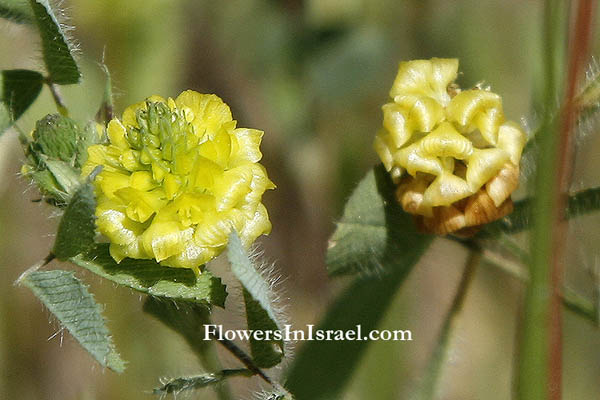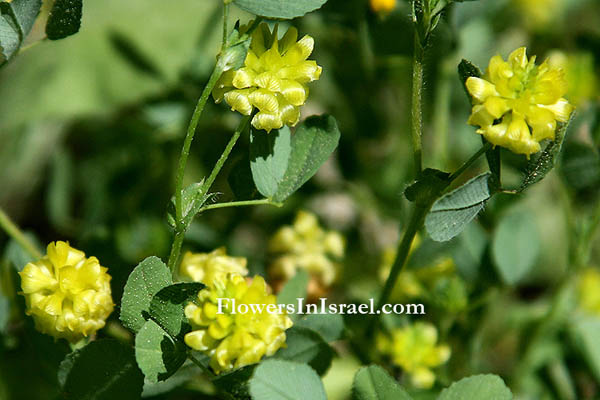Triangular-podded milkvetch,Hebrew: קדד ספרדי, Arabic: القتاد البيوتي
| Scientific name: | Astragalus boeticus L. | |
| Common name: | Yellow Milk Vetch, Swedish coffee, Triangular-podded milkvetch | |
| Hebrew name: | קדד ספרדי | |
| Arabic name: | القتاد البيوتي | |
| Family: | Fabaceae or Papilionaceae, Legume/Pea Family, הפרפרניים |

|
| Life form: | Annual | |
| Stems: | Erect or sprawling, to 60 cm, caulescent, procumbent | |
| Leaves: | Alternate, compound, 10-15 pairs of leaflets, pinnate, hairy beneath | |
| Inflorescence: | Dense racemes with 5-15 flowers | |
| Flowers: | Yellow corolla | |
| Fruits / pods: | Pod 2-4cm, oblong, triangular in section, grooved beneath, hooked at apex, shortly hairy; seeds, roasted, ground, are used as a substitute for coffee | |
| Flowering Period: | February, March, April | |
| Habitat: | Batha, Phrygana | |
| Distribution: | Mediterranean Woodlands and Shrublands, Semi-steppe shrublands, Shrub-steppes | |
| Chorotype: | Mediterranean | |
| Summer shedding: | Ephemeral |

Derivation of the botanical name: Astragalus, ἀστραγαλος, literally signifies a huckle bone (talus), a small bone of the ankle; astragalus, which the Greeks, as well as the Romans, used for dice and other purposes and an early name applied to some plants in this family, with vertebra-like knotted roots. boeticus, Boeoticus, Βοιωτικοϛ from Boeotia, from Boeotia, near Athens, the birthplace of Hercules and Bacchus. The Hebrew word: קדד, kedad, related to Akkadian (the earliest attested Semitic language; qadādu (= to lean, bend, incline), from Arabic qudad.
|